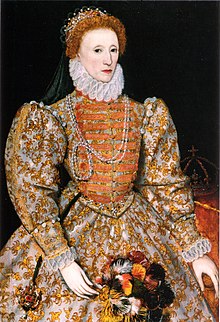‘A certain
degree of success, real or supposed, in the delineation of
Queen Mary,
naturally induced the author to attempt something similar
respecting
"her sister and her foe," the celebrated Elizabeth. He
will not,
however, pretend to have approached the task with the same
feelings; for
the candid Robertson himself confesses having felt the
prejudices with
which a Scottishman is tempted to regard the subject;
and what so
liberal a historian avows, a poor romance-writer dares not
disown. But he
hopes the influence of a prejudice, almost as natural to
him as his
native air, will not be found to have greatly affected the
sketch he has
attempted of England's Elizabeth. I have endeavoured
to describe her
as at once a high-minded sovereign, and a female of
passionate
feelings, hesitating betwixt the sense of her rank and
the duty she
owed her subjects on the one hand, and on the other her
attachment to a
nobleman, who, in external qualifications at least,
amply merited
her favour. The interest of the story is thrown upon that
period when the
sudden death of the first Countess of Leicester seemed
to open to the
ambition of her husband the opportunity of sharing the
crown of his
sovereign.’
The text above is from the introduction to Sir Walter Scott’s
“Kenilworth”. The great queen of England
lived to nearly 70 (born 1533), but it was a life of heavy responsibility, and she seems to
have passed weary of life. The end came on
March 24th, 1603.

No comments:
Post a Comment
Note: Only a member of this blog may post a comment.